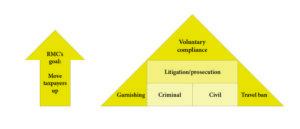
Intellectual Property – Comparative Guide Introduction | Gowling WLG
History does not stand still, so nor does intellectual property law. 2016 and so far in 2017 we have seen change and the indication of upheaval to come.

History does not stand still, so nor does intellectual property law. 2016 and so far in 2017 we have seen change and the indication of upheaval to come.

When we ordinarily refer to compliance in goods and services tax (GST), what strikes our minds is the filing of GST returns and settling the GST due within the stipulated taxable period. It has been more than two years now since the implementation of GST in Malaysia. The compliance rate for GST filing thus far has …
Continue reading “Cultivating Good GST Compliance Culture via CBOS 3.0”

The enforcements of customs valuation and transfer pricing are the epitome of similar means and different goals to achieve the same end. The means of valuation and pricing are similar in the form of the valuation and pricing methodologies. However, the goals are at two ends of the spectrum: the former wants the highest appraised value of imports; the other, …

When the goods and services tax (GST) was first introduced to replace the general sales tax and service tax regimes in 2015, the overarching concern for businesses was the implementation and administrative aspect. As companies scrambled to understand the rules and procedures in order to facilitate the rollout of GST, many, if not all, would have neglected or overlooked …

The goods and services tax (“GST”) has been with us since 1 April 2015 and we have seen its impact on various parts of our lives. In theory, it is a relatively straightforward tax regime that can nevertheless prove difficult in practice, especially in relation to GST on real estate transactions.

‘When fintech became a big thing the narrative was all about the banks being disrupted and the threat to their business model,’ says Martin Cook, UK general counsel at Funding Circle, one of the world’s most successful peer-to-peer lenders. ‘There has since been a shift toward what might be called “fintech 2.0”, with a less …

DAC Beachcroft and The In-House Lawyer recently conducted a survey to assess the role and influence of the in-house lawyer in managing risk. Is the role that of ringmaster – right at the heart of the matter – or more a side-line prompt? Essentially does the legal department have the necessary influence, associations, and information …

In her much-touted new book on bolstering team-working in professional services, Smart Collaboration, Harvard Law School professor Heidi Gardner argues that sophisticated buyers are increasingly expecting an open-house approach from advisers in delivering their wares.

For classists, the word ‘disruptive’ still carries negative connotations of damage, chaos and disarray. But these days in corporate circles it has become the phrase of the day – a complimentary shorthand to describe tech-driven innovators remaking all manner of industries. But the cult of disruption – birthed in Clayton Christensen’s hugely influential 1997 book …

At a recent event for senior in-house counsel in London, two clear messages emerged. Firstly, that there is a rapid professionalisation in the way that major legal departments are managing themselves. Secondly, there was agreement that much of the support for change was being driven from the ‘alternative’ legal market. Despite this, there was a …